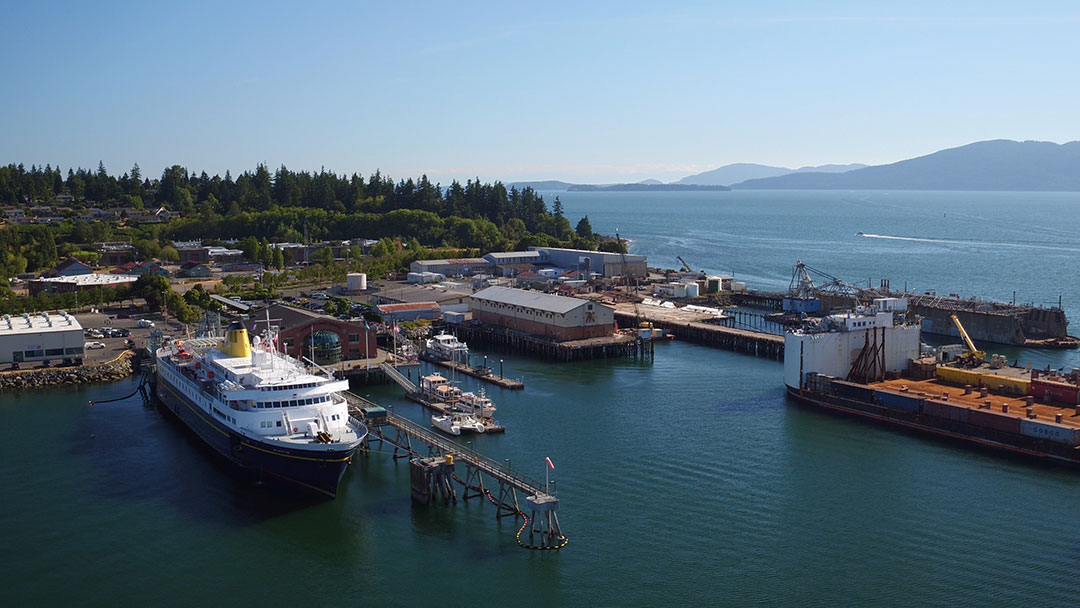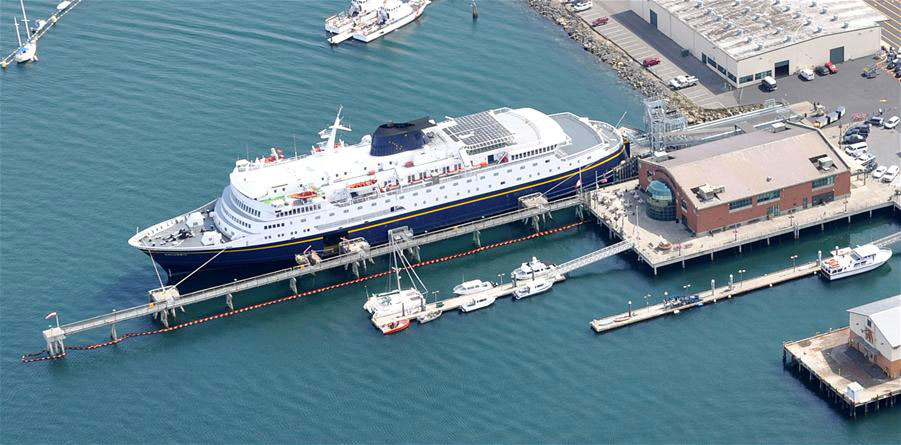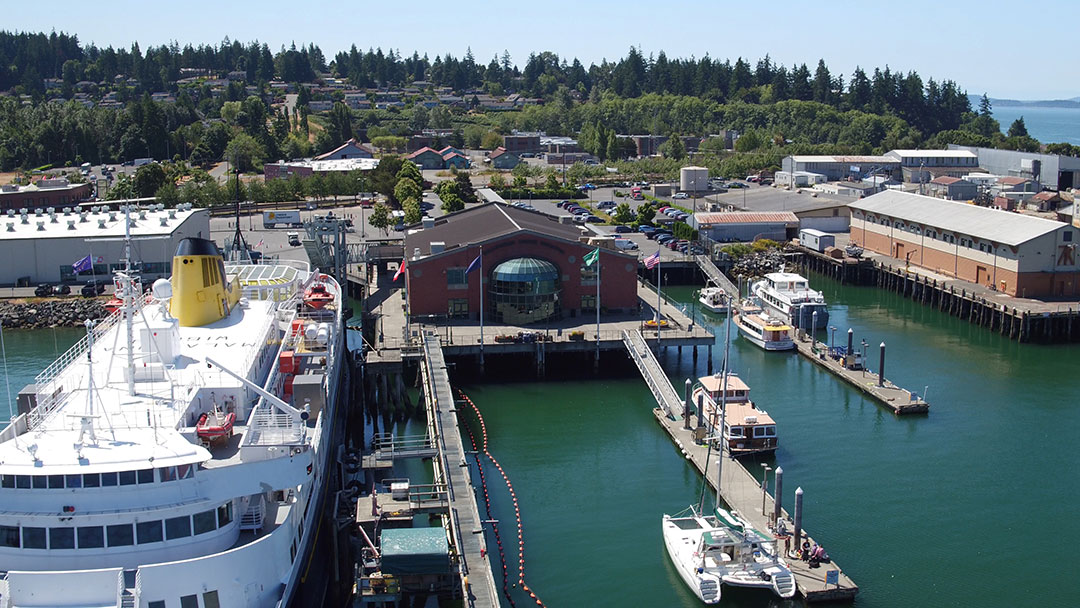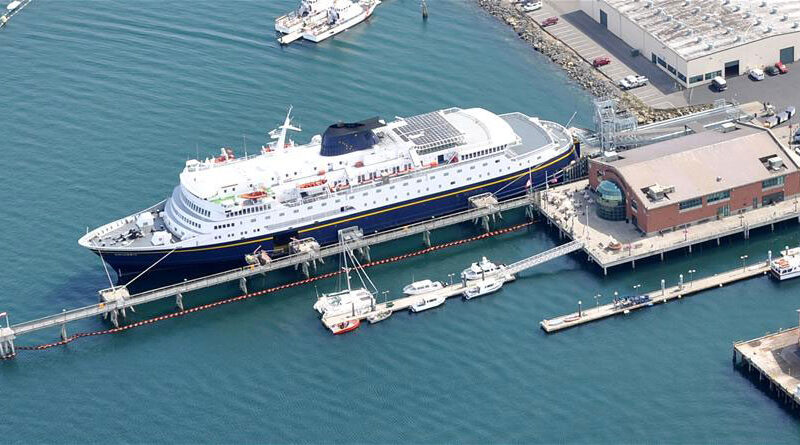
The good news has sometimes been slowing in coming for the Alaska Marine Highway System.
When the ferry M/V Matanuska returned to Prince Rupert, British Columbia, late in the evening on June 20, 2022, it marked the end of a three-year service interruption to a port that had once been a key destination.
New border crossing requirements between the U.S. and Canada that were left unresolved during the pandemic were a key reason for the cessation of service. But in truth, the System had long grappled with declining passenger numbers and the costs of maintaining an older fleet.
Passenger traffic, the principal reason for the service, peaked way back in the 1990s and has generally been slowly declining since. In 1992, the Southeast route, popular with tourists, handled 373,000 passengers. That number fell to 152,000 in 2019, and, while the system has always been subsidized, the degree of those subsidies has been of concern to policy makers. In 1992, passenger fares covered 60% of operating costs, but only 35 percent in 2019.
Politics and other state fiscal challenges were another factor, particularly after the 2018 Alaska election of Gov. Mike Dunleavy. He initially sought to pare expenses within the system, leading to sharp service cuts.
One result of those cuts was the formation of the Friends of Alaska Marine Highway System, a nonprofit that advocated for improvements. Percy Frisby, a founder who hails from Ketchikan, states that there was a sense that “nobody in the Department of Transportation was listening.”
But, more recently, the group has faded in influence with a new oversight organization in place within the AMHS. And, as Dunleavy’s administration insists, things are changing for the better.
The promise may now be easier to fulfill.
On January 25, U.S. Senators Lisa Murkowski and Dan Sullivan, both Alaska Republicans, announced the Federal Transit Administration’s award of more than $285 million to the Alaska Marine Highway System, designated to replace an aging vessel, upgrade ferry dock infrastructure in rural communities, modernize four vessels, procure an electric ferry, and design a new mainliner vessel.
So much good news will be hard to digest after years of running lean.

Evolution and Revolution
Dating back to 1959, the year Alaska became a state, its ferry system has grown to serve much of the 3,500 miles of coastline connecting Bellingham, Wash., in the south, with Dutch Harbor in the Aleutians, and then far to the northwest, with service to 30 more communities.
Because of the state’s reliance on water transport and dearth of roads, the AMHS earns special treatment as part of the National Highway System when it comes to doling out money to the states.
But, for years, equipment got older and older, the levels of subsidization increased and then there was the 2018 election.
Shortly after taking office, facing a shortage of revenues, Dunleavy established the Alaska Marine Highway Reshaping Work Group to start with a clean slate and consider options — including privatization — that would provide a more financially viable future for the system. He also proposed a maximum subsidization of $24 million, well below what previous administrations had allocated to the System.
And while the legislature ultimately settled on a more generous $30 million, the ceiling was still concrete enough that it forced sharp cuts in service. In some cases, communities that had no other transportation connection with the rest of the state, or the world, were left completely without service.
“The service and number of passengers were declining before Dunleavy took office; the big problem is that over the decades, no one in a position of leadership planned ahead for replacement vessels,” says Sam Dapcevich, spokesman for the Alaska Department of Transportation. “There were a few one-offs and then the fast ferries in the early 2000s.”
The latter, he adds, proved expensive to operate and maintain, so they were sold to interests in Spain as passenger numbers were already on the decline and the COVID pandemic caused even greater declines.
“The Governor’s goal has always been to make the system more efficient and to stabilize service, and he has made a lot of progress,” says Jeff Turner, Gov. Dunleavy’s deputy communication director.
With an aging fleet in place, vessels have been methodically replaced with other improvements also taking effect, says Turner. “There is now an 18-month schedule rather than 12, providing more opportunities to plan trips and stabilizing the revenue picture by providing more clarity about demand. If people can book 18-months out, the system can plan and get a better picture of when to expect the greatest traffic.”
These days, though, there has been an upswing in traffic levels, with vessels operating full or nearly full capacity.

New and Improved
“We don’t know all the factors that drove down passenger traffic, but it could have been a combination of more competitive airfares and then, eventually, declining service levels themselves,” says Turner.
For example, in Sitka, which is even more isolated than most communities in Alaska’s southeast, and thus more dependent on the AMHS, the service levels dropped dramatically. “They used to get pretty good service, but now it’s just one ferry a week and that makes it hard to plan travel, for example, to Juneau,” he notes.
The Alaska Marine Highway System wants to increase those service levels as, most recently, post-COVID, with car rental prices up and more people looking to get out, they are flocking to the ferries again, he says.
Although the System is unusual in being so dependent on passenger revenue, Dapcevich does not see a need or reason to change that. Other than vehicles driven on and off under their own power, “We are not a freight carrier,” he says.
The biggest challenges recently have been staffing, especially in the near-term, and the number and reliability of the vessels in the fleet. “We are throwing a lot of resources into a solution,” says Dapcevich.
For example, the System is offering $5,000 bonuses for on-vessel positions. “So, we’re attempting to get people and we have a lot of recruits, but it takes time to get them to work, namely four months to get a Mariner License and then there are drug tests to pass.”
But, notes Dapcevich, the biggest challenge − now within sight of a fix − is the aging fleet. The Matanuska that runs the loop through Bellingham to Skagway, and was recently welcomed back to Prince Rupert, is the oldest vessel in the fleet. It is one of the `mainline’ vessels along with Kennicott and sometimes the Malespina. None of them have backups.
Matanuska went into service in 1963 and was repowered a few years ago. However, on a 60-year-old vessel the overhauls become longer and longer with rusted steel that needs replacement and compartments that need to be rebuilt.
“People tell us they want consistent and reliable service, but it is difficult when we don’t really have a backup for Matanuska or the other mainline vessels,” he says.
The smaller vessels don’t run that circuit, but serve other routes in the system. Many of those vessels were built in the 1970s. “The management team says 30 years is usually the service life for these vessels, so we are pushing the limits with these,” says Dapcevich.
Right now, the system is also making plans to replace Tustumena, which was built in 1964.
“We reached out to shipyards and put out a request for proposals, but we got no response. So, we are now communicating directly with shipyards,” he says, adding the cost estimates being received are in the range of $200 to $250 million. “That’s a step forward, and our legislature has appropriated $30 million toward another mainline ferry that we hope to move on as well.”
The landmark Murkowski-Sullivan funding was made possible by H.R. 3684 − the Infrastructure Investment and Jobs Act (IIJA) − which Sen. Murkowski played a lead role in writing and negotiating.
All things considered, then, AMHS may be heading for brighter days. “We feel we are now at a turning point. Things were going in a negative direction for a while but now with the boost in funding and potentially new ships on the horizon, we feel like we are coming back,” says Dapcevich.
As for the latest federal largesse, “it’s too early for us to predict the type of improved service, but we feel confident that what we will be able to achieve with the project funding is really going to make our fleet more resilient and improve our reliability to our customers,” says Shannon K. McCarthy, Communication Director at the Alaska Department of Transportation & Public Facilities. “It will allow us to reinvest in our ferry infrastructure and ensure continued service to our small coastal communities for years to come.”
There could even be more good news on the horizon as the federal funding awards are the first of the IIJA’s newly established Ferry Service for Rural Communities Program and the Electric or Low Emitting Ferry Pilot Program.
Additional grant funding from the two programs is expected to be available for use by the Alaska Marine Highway System in fiscal years 2024, 2025 and 2026. •

